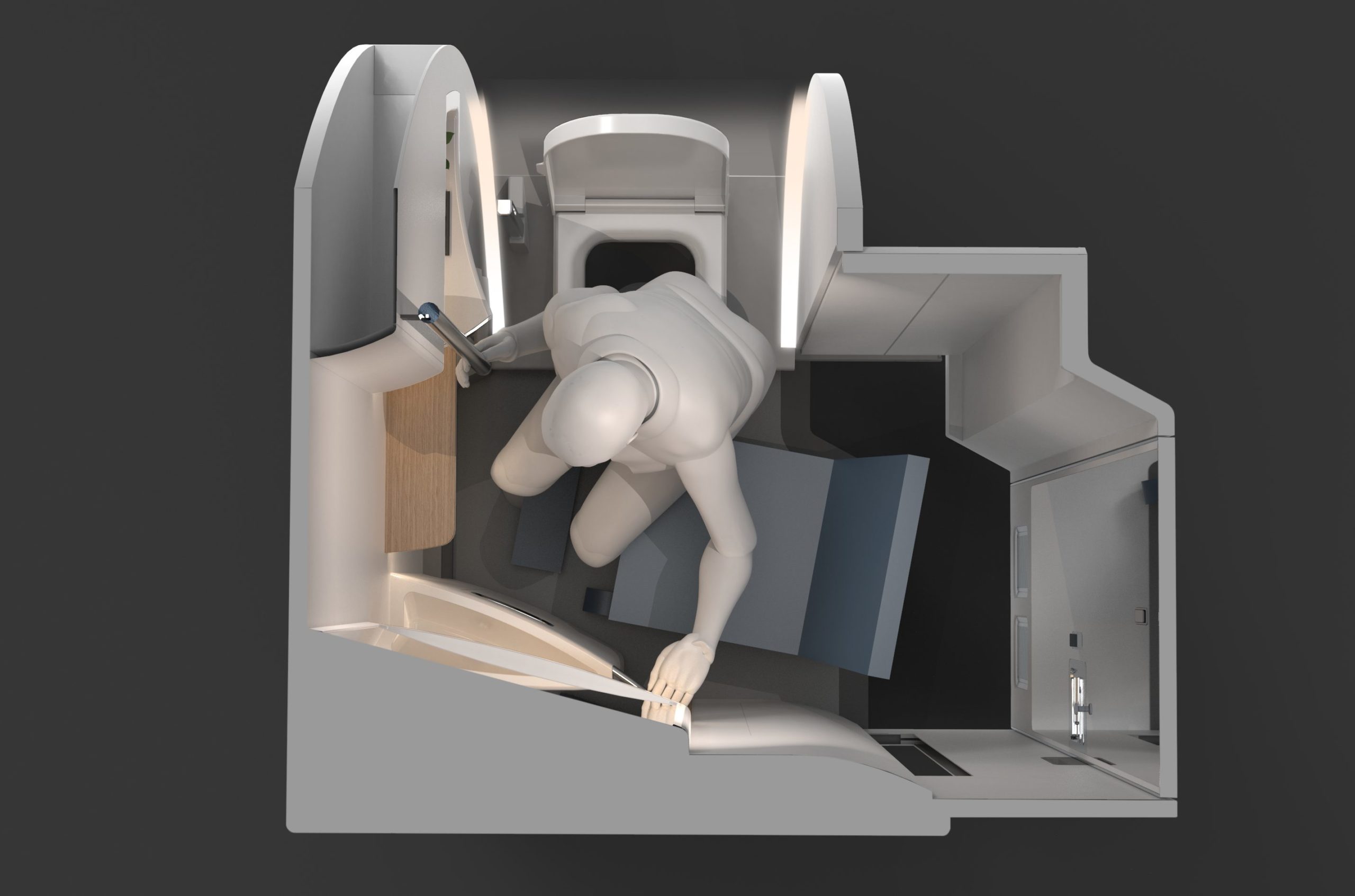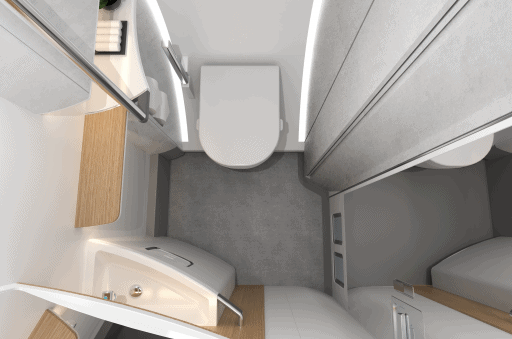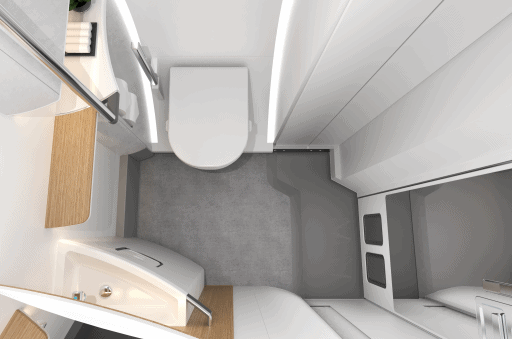New Aircraft Lavatory Concept Is Accessible to Passengers in Wheelchairs
Share

Acumen Design Associates and ST Engineering have jointly developed ACCESS, which they describe as “the world’s first expanding aircraft lavatory,” to improve the flying experience on single-aisle aircraft for passengers with reduced mobility (PRMs). As narrow-body flight times grow in length, the need to make lavatories more easily accessible is imperative.
In certain countries, there’s currently no legislation regarding the availability of an accessible lavatory on narrow-body jets, but arguably, there’s more need for the facility than ever. With new aircraft types such as the Airbus A321XLR featuring a range of up to 4,700 nautical miles, narrow-body jets are now capable of flying longer, even transatlantic routes.
Daniel Clucas, senior designer at Acumen Design Associates (Acumen), said: “Many PRMs avoid flying because of the compromises they have to make – especially when using the on-board lavatory. During our research, we heard first-hand how those who do fly will even avoid using the lavatory altogether if possible.”


ACCESS has been designed for line-fit or retrofit on Boeing 737 and Airbus A321 aircraft with input from accessible aviation consultant and founder of Rocket Girl Coaching, Mary Doyle; campaigner, lobbyist and founder of Flying Disabled, Chris Wood; and entrepreneur and founder of easyTravelseat, Josh Wintersgill, among others.
During the research process, Doyle stated, “I believe there are four main things that can improve the onboard experience: more space, highly sanitized work surfaces, greatly improved physical supports for unassisted transfer and anti-slip flooring. And whilst lavatories serve a functional need, I believe they should look beautiful too, in keeping with excellent customer experience.”
“Many PRMs avoid flying because of the compromises they have to make – especially when using the on-board lavatory.” – Daniel Clucas, Acumen Design Associates
The resulting solution created by Acumen and ST Engineering uses a moving wall to offer PRMs 40% more space than a standard lavatory module.
Clucas explained, “The standard lavatory is 33 inches wide with a 20-inch wide doorway. ACCESS fits into that footprint, so it doesn’t take up any additional cabin space, but in its expanded state is 51-inches wide, with an extra-wide entranceway of 24 inches.” This allows for passengers in a wheelchair to enter the lavatory independently, rather than having to be transferred behind a curtain. It also provides enough room for a carer or family member to enter the space, if necessary.
According to Clucas, the process of expanding or shrinking the lavatory, which is carried out by a crewmember, takes a matter of seconds using a latch on the outside wall of the lavatory and leaves enough room for people to move around in the galley.
The expanded lavatory opens into the entranceway in the aisle at the rear of the aircraft, and covers what Clucas refers to as “the assist space” – where a crewmember would stand in the event of an emergency. “In the same way business-class cabin doors have a back-up mechanism; we will need to prove there is an adequate fail-safe that can stow the lavatory away in the event of an emergency while it is in its expanded state,” he noted.
ACCESS builds on a previous product created by Acumen and ST Engineering, the ARC lavatory upgrade kit, which was shortlisted for a Crystal Cabin Award in 2019. Similar to ACCESS, the Zen-inspired Boeing 777 lavatory design featured “cutting-edge hygiene technologies - such as antimicrobial surface finishes, touchless faucet and flush mechanisms and under-floor membranes to remove odors – combined with floor-to-ceiling lighting and minimalist, curved architecture to create a striking interior,” Clucas said. ACCESS also includes features such as vertical, horizontal and fold-down grab bars and a lowered sink height.
Acumen and ST Engineering began formally working on ACCESS in June 2019 and have progressed from the initial concept to the final mockup in under a year. The companies are currently working through the engineering and certification phase for ACCESS and estimate the product could be flying within the next 12 months.


